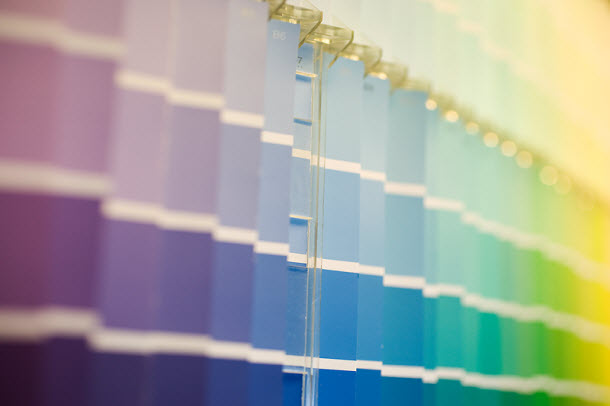 Whatever area of real estate investing you specialize in, you’ll likely need to deal with a lot of wall painting over the course of your career. Unless you actually enjoy the process of painting, you’ll likely want to outsource painting projects as early as financially possible.
Whatever area of real estate investing you specialize in, you’ll likely need to deal with a lot of wall painting over the course of your career. Unless you actually enjoy the process of painting, you’ll likely want to outsource painting projects as early as financially possible.
However, long after you hang up your tarp and brush on your properties, you’ll want to stay connected to color trends and techniques to maintain a fresh and modern look that maximizes profit.
White Won’t Wow
While there are dozens of ways to convince tenants or buyers that white is wonderful, the truth is it’s boring, hard to maintain and shows poorly. White may be an easy choice, but it’s not one that will showcase or differentiate your property to prospects.
Color Conundrum
Conversely, working with color is fraught with risk. Unless your properties are of the types that necessitate the services of an interior designer, the average real estate investment professional should avoid using obtrusive colors in their décor. The wrong color can be easy or difficult to overcome, depending on the color choice and the application – but it’s a challenge your property doesn’t need.
Neutralize Negativity
Your best bet, in nearly every circumstance, is to find a non-white neutral. The specific recommendations will change over the years, but the current neutrals of choice tend to be earth tone, off-white blends. The undertones of green, blue and grey dominate the current building and renovation market.
Budget Busters
After color, the biggest paint decisions boil down to cost. If you’re overly focused on your profit margin, you may be tempted by bargain brands. While this makes sense on the surface, according to paint professionals and the experience of real estate investment professionals, bargain basement brands are seldom a bargain and you’re better served by mid-priced brands. The thinner coverage of the lowest priced paints doubles (and in some cases triples) the coats required, costing more in both labor and supplies, negating any superficial savings.
Premium Not Required
If you’re accustomed to luxury brands and want to extend that to your properties, you may be tempted to choose premium paint brands. In truth, premium brands are not necessary unless your application requires a longer than average lag between paintings or in areas that experience considerable wear and tear, like building entry ways.
Since in tenant areas the average life expectancy of painted walls is 3 years, buying a paint that lasts 10 is illogical. The composition and quality of lower priced paints has increased substantially over the last twenty years, so mid-priced brands are comparable to premium brands in every consideration other than longevity.






